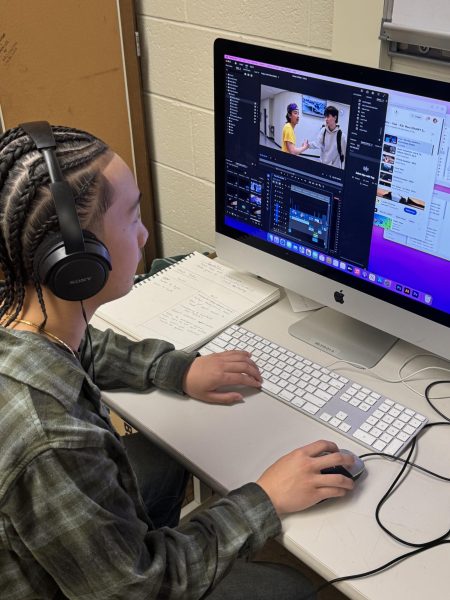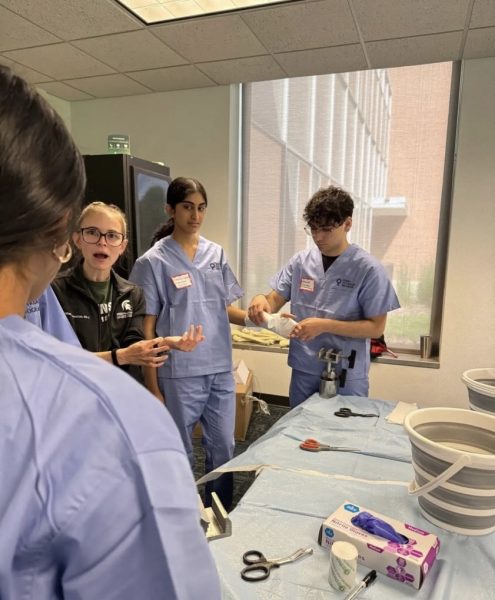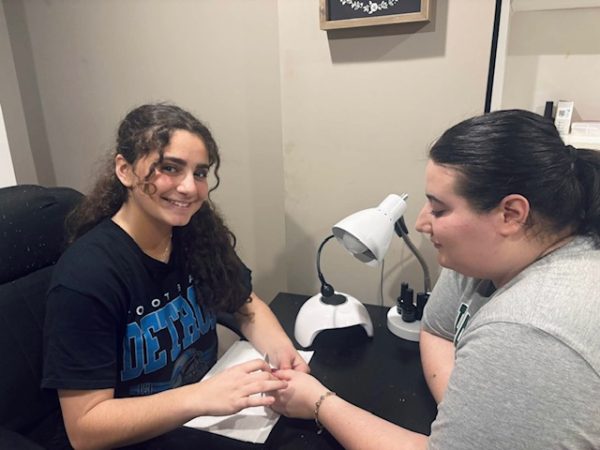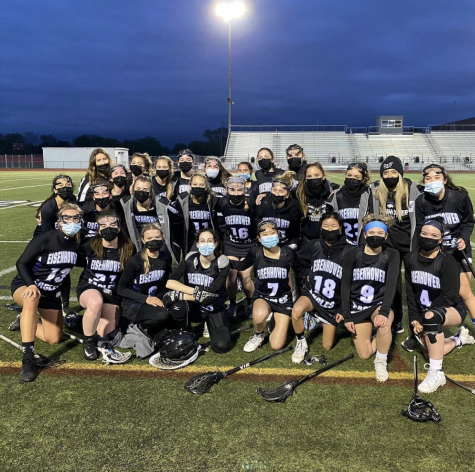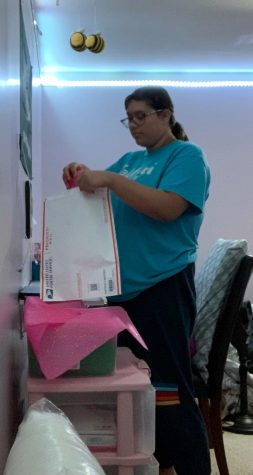Techno increase
Vital technology ups in usage during the pandemic
Scrolling through social media, logging onto the computer for class, watching Netflix and creating zoom calls with friends—teenagers now fill any and all their time with technology due to challenges from the pandemic that plague the world and daily lives.
Technology, a vast term that embodies everything from computers, to phones, to televisions, shares both advantages and disadvantages with its user population.
“I think technology has been a saving grace in a lot of ways. Just a few years ago, I don’t think we ever would have imagined that we would be able to facilitate teaching and learning like we are right now,” principal Jared McEvoy said. “The technology that we have available to us is making it possible for students to learn from anywhere and that obviously hasn’t always been the case. The pandemic has kind of required us to really lean on and use technology a lot more, which I think has a lot of positive benefits that are going to follow.”
Since Covid swept the nation back in March of 2020, the use of mobile phones in the United States increased 40 percent and use of laptops increased 37 percent, according to Statista. These statistics prove how much the need for technology increased due to Covid; the pandemic made schools move to online platforms, which especially increased the use of laptops.
“I feel like [technology] is taking over in a way,” sophomore Isabella Gigliotti said. “I think when we go back to a somewhat normal lifestyle and see people, we are not going to know how to communicate very well face-to-face because we have been so used to communicating through social media for so long. Also, I think that the way we act through social media is not the way we act in real life and when we go back to seeing people, it will show.”
Due to the increase of technology, social skills have started to dwindle. Teenagers spend about nine hours a day on media, according to Common Sense Media. More teenagers spend their time communicating over the phone as opposed to communicating face-to-face.
“Technology has affected my life [because] I feel more dependent on it. If I am bored, I look at my phone; if I need help on homework, I look to Google. I don’t walk to a friends house to get entertainment or homework help like I used to when I was little,” senior Ashley Homann said.
For many, technology takes place as the go-to entertainer and helper. Most of the population checks their mobile device 58 times per day, according to elitecontentmarketer.com. Although society tends to view the increase in technology as a negative, that’s not always the case.
“I feel like [technology] has been a positive for me,” senior Jaden Potance said. “It’s helping me stay in contact with my friends that I can’t see all the time.”
About three hours per day is spent on social media and messaging, according to a Globalwindex in 2018. Many friends use social media in order to stay in contact with each other, which causes a high amount of time spent on technology every day. In a pandemic when social distancing and quarantining becomes more of a norm, technology aids in tying people together.
“One of the greatest ways technology impacted me is helping me to not drift away from my friends and still stay close to each other because we would communicate almost everyday through social media and just talk. Whereas I feel like if I didn’t have social media, I would have drifted from my friends and we wouldn’t be as close as we were before Covid started,” Gigliotti said.
Many people found a way to contact and connect with others during the pandemic, such as: social media platforms, Microsoft TEAMS, Zoom and Google Hangouts. Making bonds with others through different technology platforms brought about positive experiences, despite the increase in technology.
“I think that social media is becoming more prevalent in society nowadays because everyone is home and not able to see their friends and for some people, social media is the only way to connect with their friends or family,” Gigliotti said.
Although a noticeable “cure” from boredom includes mindlessly scrolling through Instagram or TikTok, finding a post with a motivational quote, a reminder of one’s worth, exercising motivation, inspiration for a project or a fun recipe to try gives users an idea to ponder or a new experience to attempt. This leads to boredom being “cured” in a healthier way than simply scrolling through social media.
“Since Covid has started, I think social media has impacted me in both a positive and negative way. Some ways that it positively affected me was it helped me communicate with my friends and it helped to entertain me in my free time,” Gigliotti said. “One way it negatively impacted me was I would be on social media when I could be doing something productive, so in other words it made me very lazy.”
Using technology to cure boredom can be a quick fix to many, but may lead to laziness. Instead of enjoying fresh air and exercising, many find themselves immersed on their couch watching a movie or T.V. show.
“I don’t think it’s taking over, no. I think it could if we let it; I think what’s important is that we grab on to technology and use it for the good that it can provide us, but we don’t allow it to overtake us. It shouldn’t replace things; it should support teaching and learning, not replace it,” McEvoy said. “Right now, our reality is we’re learning through screens a lot because the pandemic is requiring us to do so.”
Learning over Microsoft TEAMS meetings may be the norm now, but even when it isn’t anymore, the technological skills learned throughout this time prove beneficial.
“Don’t let it rule your life,” McEvoy said. “Because we’re becoming more comfortable with technology and more reliant on it, they’re some of the social boundaries that were in place before all of this easily accessible technology was here. Sometimes technology does give us a false sense of things, [like] automatically being able to take care of a lot more quickly and the reality is there’s still a human behind the technology.”
Your donation will support the student journalists of Eisenhower High School. Your contribution will allow us to purchase equipment and cover our annual website hosting costs.



